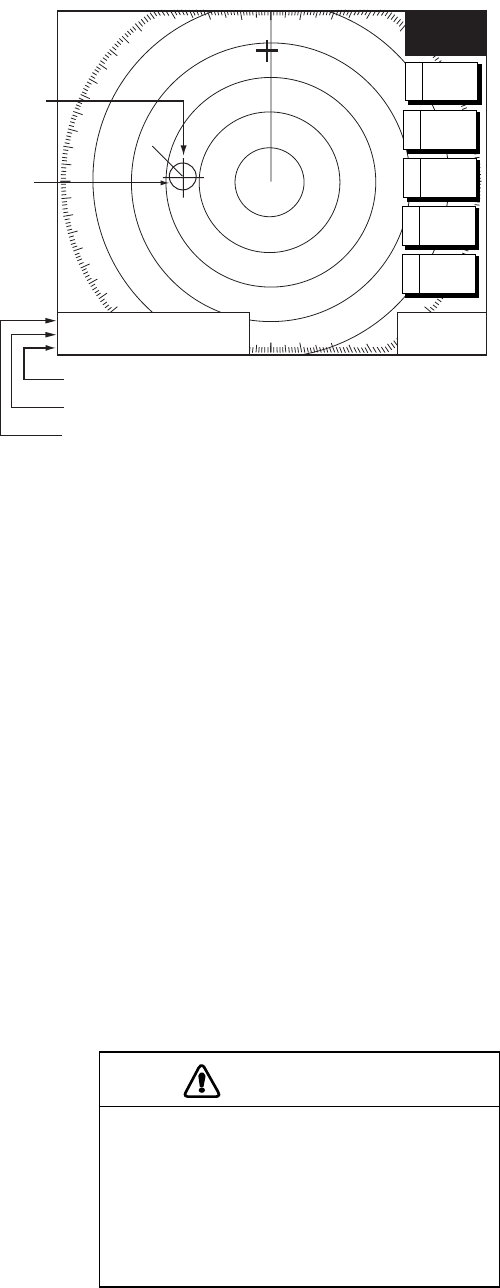
2. RADAR OPERATION
2-32
TARGET
359.9 ˚R
11.70
nm
+
No.01 VECTOR TRUE 15min
CSE 359.9˚T SPD 12.5kt
CPA 2.21nm TCPA 12:35
ARP
Target
CPA and TCPA
Course and Speed
Target No., Vector Reference (True), Vector Time
Cursor
01
12/
H-UP
3nm
LP
319. 9
°T
RETURNE
TARGET
INFO
D
TRAILA
TLL
OUTPUT
B
ACQC
ARP target data
2.26.8 CPA/TCPA alarm (ARP)
When the predicted CPA of any target becomes smaller than a preset CPA alarm range or
its predicted TCPA less than a preset TCPA alarm limit, an audio alarm sounds and the
speaker icon appears (in red). In addition, the target plot symbol of the offending target
changes to a triangle and flashes together with its vector. You may silence the audio alarm
with the CLEAR key. Press the ALARM key and the message “COLLISION ALARM”
appears. Press the C: CLEAR ALARM soft key to acknowledge the alarm. The flashing of
the triangle plot symbol continues until you intentionally terminate tracking of the target. The
ARP continuously monitors the predicted range at the Closest Point of Approach (CPA) and
predicted time to CPA (TCPA) of each track to own ship.
This feature helps alert you to targets which may be on a collision course with own ship.
However, it is important that gain, A/C SEA, A/C RAIN and other radar controls are properly
adjusted and the ARP is set up so that it can track targets effectively.
CPA/TCPA alarm ranges must be set up properly taking into consideration the size,
tonnage, speed, turning performance and other characteristics of own ship.
CAUTION
The CPA/TCPA alarm should never be
relied upon as the sole means for detect-
ing the risk of collision. The navigator is
not relieved of the responsibility to keep
visual lookout for avoiding collisions,
whether or not the radar or other plotting
aid is in use.


















